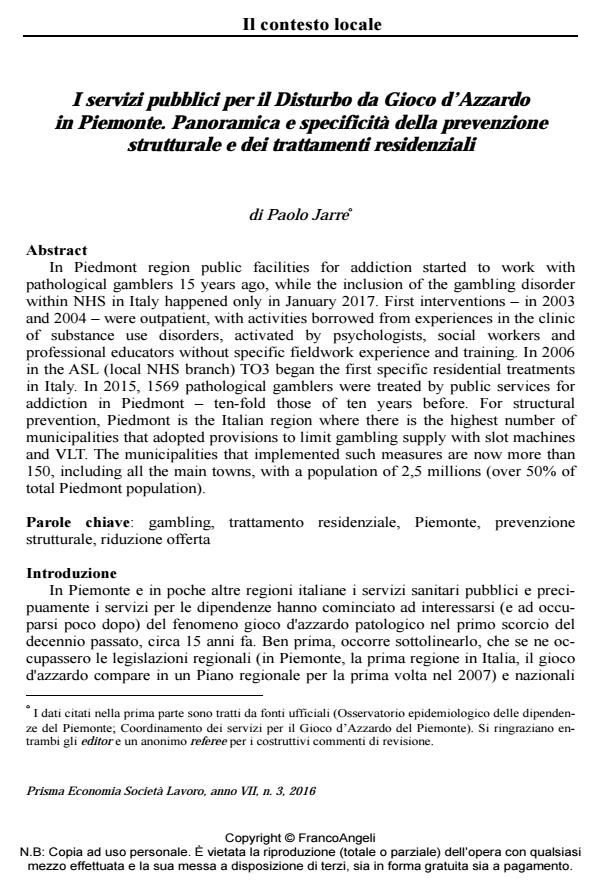I servizi pubblici per il Disturbo da Gioco d’Azzardo in Piemonte. Panoramica e specificità della prevenzione strutturale e dei trattamenti residenziali
Journal title PRISMA Economia - Società - Lavoro
Author/s Paolo Jarre
Publishing Year 2018 Issue 2016/3
Language Italian Pages 12 P. 156-167 File size 209 KB
DOI 10.3280/PRI2016-003010
DOI is like a bar code for intellectual property: to have more infomation
click here
Below, you can see the article first page
If you want to buy this article in PDF format, you can do it, following the instructions to buy download credits

FrancoAngeli is member of Publishers International Linking Association, Inc (PILA), a not-for-profit association which run the CrossRef service enabling links to and from online scholarly content.
In Piedmont region public facilities for addiction started to work with pathological gamblers 15 years ago, while the inclusion of the gambling disorder within NHS in Italy happened only in January 2017. First interventions - in 2003 and 2004 - were outpatient, with activities borrowed from experiences in the clinic of substance use disorders, activated by psychologists, social workers and professional educators without specific fieldwork experience and training. In 2006 in the ASL (local NHS branch) TO3 began the first specific residential treatments in Italy. In 2015, 1569 pathological gamblers were treated by public services for addiction in Piedmont - ten-fold those of ten years before. For structural prevention, Piedmont is the Italian region where there is the highest number of municipalities that adopted provisions to limit gambling supply with slot machines and VLT. The municipalities that implemented such measures are now more than 150, including all the main towns, with a population of 2,5 millions (over 50% of total Piedmont population).
Keywords: Gambling, trattamento residenziale, Piemonte, prevenzione strutturale, riduzione offerta
Paolo Jarre, I servizi pubblici per il Disturbo da Gioco d’Azzardo in Piemonte. Panoramica e specificità della prevenzione strutturale e dei trattamenti residenziali in "PRISMA Economia - Società - Lavoro" 3/2016, pp 156-167, DOI: 10.3280/PRI2016-003010